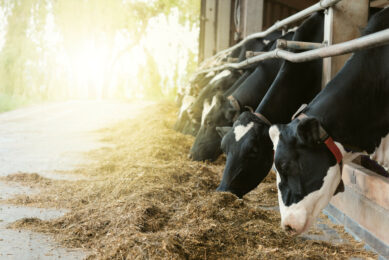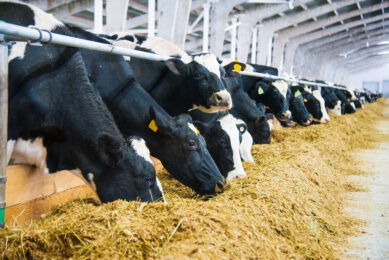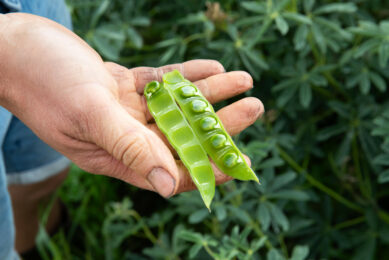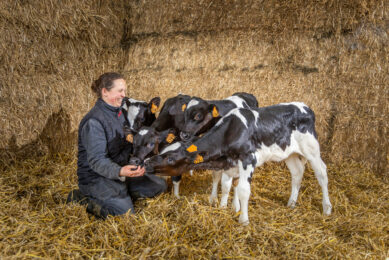Use of citrus by-products in ruminant feeding
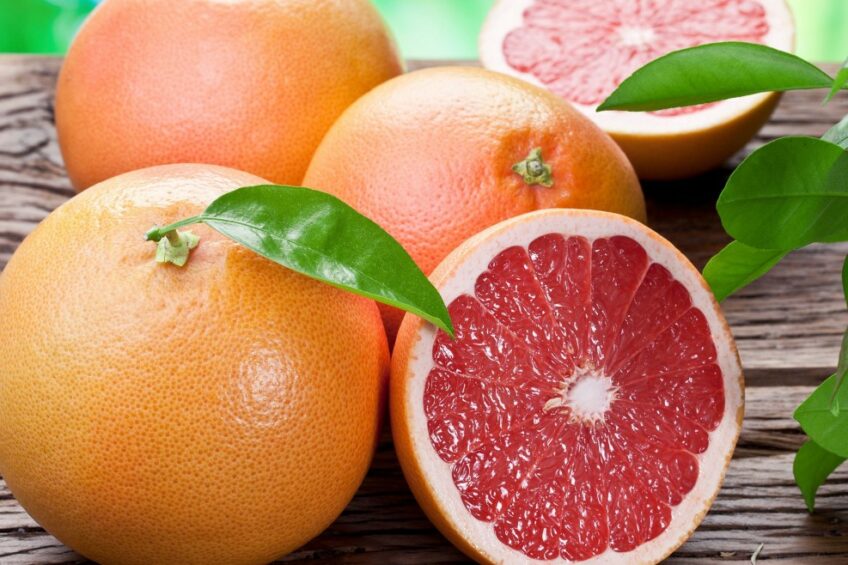
Citrus fruit residue comprised of peel, pulp, rag, and seeds could be used either individually or in various combinations as alternative feeds for ruminants.
Citrus fruits are principally consumed by humans as fresh fruit or processed juice, either fresh chilled, or concentrated. After the juice is extracted from the fruit, there remains a residue comprised of peel, pulp, rag, and seeds.
The increased disposal costs of these residues which are produced in large quantities (around 90 million tonnes per year worldwide) have prompted the use thereof either individually or in various combinations as alternative feeds for ruminants.
The advantage of using these by-products is to diminish the dependence of livestock on grains that can be consumed by humans and to eliminate the need for costly waste management programmes.
Nutrient composition
The main citrus by-products fed to ruminants are fresh citrus pulp, citrus silage, dried citrus pulp, citrus meal fines, citrus molasses, citrus peel liquor, and cull or excess fruit.
These materials contain, on average N (1–2 g/kg on a wet basis), lipids (oleic, linoleic, linolenic, palmitic, stearic acids, glycerol, and a phytosterol), sugars (glucose, fructose, sucrose), acids (citric, malic, tartaric, benzoic, oxalic, and succinic acids), insoluble carbohydrates (cellulose, pectin), enzymes (pectin-esterase, phosphatase, peroxidase), flavonoids (hesperidin, naringin), peel oil (d-limonene), volatile constituents (alcohols, aldehydes, ketones, esters, hydrocarbons, acids), pigments (carotenes, xanthophylls), vitamins (vitamin C, vitamin B complex, carotenoids), and minerals (primarily calcium and potassium).
These feeds can thus support growth and lactation, with fewer negative effects on rumen fermentation than starch-rich feeds.
Processing
It was reported that drying of citrus by-products causes little variation in the nutrient composition if temperatures range between 80 and 130°C. However, above 130°C, the acid detergent fibre (ADF), acid detergent lignin, and DM losses increase 2-2.5% for each additional 10°C, while crude protein (CP) losses seem to be low at temperatures below 200°C. Overheating of proteins can reduce their nutritive value due to Maillard polymerisation.
Effects on rumen fermentation
The citrus by-products are generally considered a source rich in pectin, which is often associated with an increase in the molar ratios of acetic acids and a decrease in propionic acid. The increased ratio of acetic acid relative to propionic acid is an important factor in milk production since acetic acid serves as a precursor of milk fat synthesis.
Another factor is that pectin could improve rumen fermentation by increasing the extent or rate of adhesion of rumen microbes to the particles and hence improving digestibility. It was also hypothesised that the combination of food rich in pectin with a diet rich in grains would reduce the incidence of rumen acidosis and improve the performance of animals. Furthermore, rumen fermentation products of citrus pulp might increase the efficiency of urea utilisation and improve net absorption and utilisation of nitrogen.
Effects on milk production
Mean daily milk yield and 4% fat-corrected milk (FCM) were found to be higher by 0.5 -1.8 kg/day with lactating Friesian cows fed a diet containing dried citrus pulp. It was also found that slightly more milk and butterfat were produced from cows fed grapefruit pulp than from those fed beet pulps.
In another study, it was found that the daily addition of 1.8 kg of dried grapefruit peel to an alfalfa hay diet increased milk production of dairy cows. It was concluded that dried grapefruit peel contains factors that stimulate milk production by dairy cows and hence improve milk production.
The replacement of corn by pelleted dried citrus pulp in lactating cow’s diets at levels 33%, 67%, and 100% were evaluated, and insignificant differences were found in milk production or FCM. The same trend was reported where the effect of 9% and 18% replacement of wheat with pelleted dried citrus pulp in the diet of dairy cows had no depressing effect on milk production and 4% FCM yield (kg/d).
Further studies have shown that citrus peel and pulp improve milk production when fed in moderate quantities under heat stress due to their high vitamin C contents which act as antioxidants or anti-heat stress. It was recommended, though, that the citrus pulp should not be used at high levels for milking cows as milk production tends to decrease. Cows fed 19.5% cornmeal yielded more milk (3.9 kg/d), and 3.5% fat- and protein-corrected milk (2.6 kg/d) compared to cows fed a diet containing dried citrus pulp above 20%.
In terms of milk quality, citrus taint may be passed into the milk under certain conditions. However, no citrus taint was detected in milk composition from cows fed up to 3.6 kg daily of dried citrus peel and pulp.
Growth of calves
In a study on Friesian male calves, it was found that replacement of barley grains with dried citrus pulp had no depressing effects on feed intake, bodyweight gain, and dressing percentage, indicating that the nutritive value of dried citrus pulp approached that of barley grain.
In another study, ground corn and wheat grains were partially, or wholly replaced with dried citrus pulp in the starter concentrate of Holstein’s calves fed 1 of 4 treatments with each having a different level of dried citrus pulp in the concentrate (0, 150, 300, and 450 g/kg). The dry matter intake and bodyweight gain were similar among treatments and it was concluded that dried citrus pulp can successfully substitute cereals in the starter diet of calves.
Points to consider
- Except for dried citrus pulp, feeding citrus by-products at very high levels may cause rumen parakeratosis, particularly when the level of dietary forage is low.
- The low soluble nitrogen content of most citrus by-products may result in a decrease in rumen ammonia. Supplementation with urea or ammonia can, therefore, be a valuable strategy.
- Due to the low phosphorus content and the Ca:P imbalance, phosphorus supplementation is an important consideration.
- Because of the low content of vitamin A, green leafy roughage is an important ingredient in diets containing citrus by-products.
*References are available from the author upon request.
Join 13,000+ subscribers
Subscribe to our newsletter to stay updated about all the need-to-know content in the dairy sector, two times a week.



